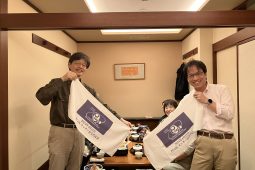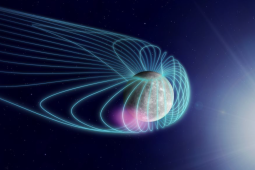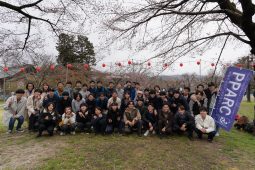PPARCセミナー(2024/1/12)

PPARCセミナー(2024/1/12)
(1)
[Name]
Akira Kazama
[Title]
STATUS REPOSTRS
Development of Martian atmosphere retrieval tool using OMEGA/MEx; Dust optical depth and Surface pressure
Development of Martian atmosphere retrieval tool using OMEGA/MEx; Dust optical depth and Surface pressure
[Abstract]
The Martian atmosphere is very thin and dry. And main components is about 95% or more CO2. The CO2 atmosphere contains a lot of dust.
The dust is a important role for Martian meteorology. On Mars, dust heat the atmosphere and cause various meteorological phenomena. Dust storm are the most famous phenomena of all, and It cause on a variety of scale, from global to, local. To evaluate these meteorological phenomena, it is important to know the atmosphere amount.
On Mars, there is seasonal variation in surface pressure of about 25% due to seasonal condensation and sublimation of CO2 to the polar caps.
The factor that causes the daily variation is the thermal tide. Thermal tidal produce pressure fluctuations of 5% in a day. It may affect other meteorological phenomena due to it can make significant changes in a day.
Our goal is understanding the mechanism of Martian meteorology.
To achieve this goal, we aim to assess quantitative thermal tides. If a retrieval accuracy of less than 5% can be achieved, we may can detect thermal tides focusing on the equatorial region. In order to achieve this derivation accuracy, we need to retrieve dust opacity.
This work have two topics: first one is Development of a tool for surface pressure fast retrievals. And another one is Development of a tool for dust optical depth retrievals at 2.77 μm. I will talk about our work progress in this seminar.
The dust is a important role for Martian meteorology. On Mars, dust heat the atmosphere and cause various meteorological phenomena. Dust storm are the most famous phenomena of all, and It cause on a variety of scale, from global to, local. To evaluate these meteorological phenomena, it is important to know the atmosphere amount.
On Mars, there is seasonal variation in surface pressure of about 25% due to seasonal condensation and sublimation of CO2 to the polar caps.
The factor that causes the daily variation is the thermal tide. Thermal tidal produce pressure fluctuations of 5% in a day. It may affect other meteorological phenomena due to it can make significant changes in a day.
Our goal is understanding the mechanism of Martian meteorology.
To achieve this goal, we aim to assess quantitative thermal tides. If a retrieval accuracy of less than 5% can be achieved, we may can detect thermal tides focusing on the equatorial region. In order to achieve this derivation accuracy, we need to retrieve dust opacity.
This work have two topics: first one is Development of a tool for surface pressure fast retrievals. And another one is Development of a tool for dust optical depth retrievals at 2.77 μm. I will talk about our work progress in this seminar.
(2)
[Name]
Yoji Kuwayama
[Title]
IPRT/
[Abstract]
PPARCで運用する飯舘惑星電波望遠鏡IPRTの広帯域での高
現行のIPRTの受信系は325MHz( & 650MHz:開発中) 中心の狭帯域高感度観測用に加えて、100-500MHz 帯を ターゲットとした広帯域太陽電波スペクトル観測システムを独立し
これまで、SKA-MID band-1 用フィードとしても検討報告がある自己補対形の 4アーム sinuous アンテナをモデルケースとして、電磁界解析ソフト FEKO を用いて設計検討を行ってきた。その結果、
本セミナーでは、開発のねらいと進捗について報告する。
現行のIPRTの受信系は325MHz( & 650MHz:開発中) 中心の狭帯域高感度観測用に加えて、100-500MHz 帯を ターゲットとした広帯域太陽電波スペクトル観測システムを独立し
これまで、SKA-MID band-1 用フィードとしても検討報告がある自己補対形の 4アーム sinuous アンテナをモデルケースとして、電磁界解析ソフト FEKO を用いて設計検討を行ってきた。その結果、
本セミナーでは、開発のねらいと進捗について報告する。





